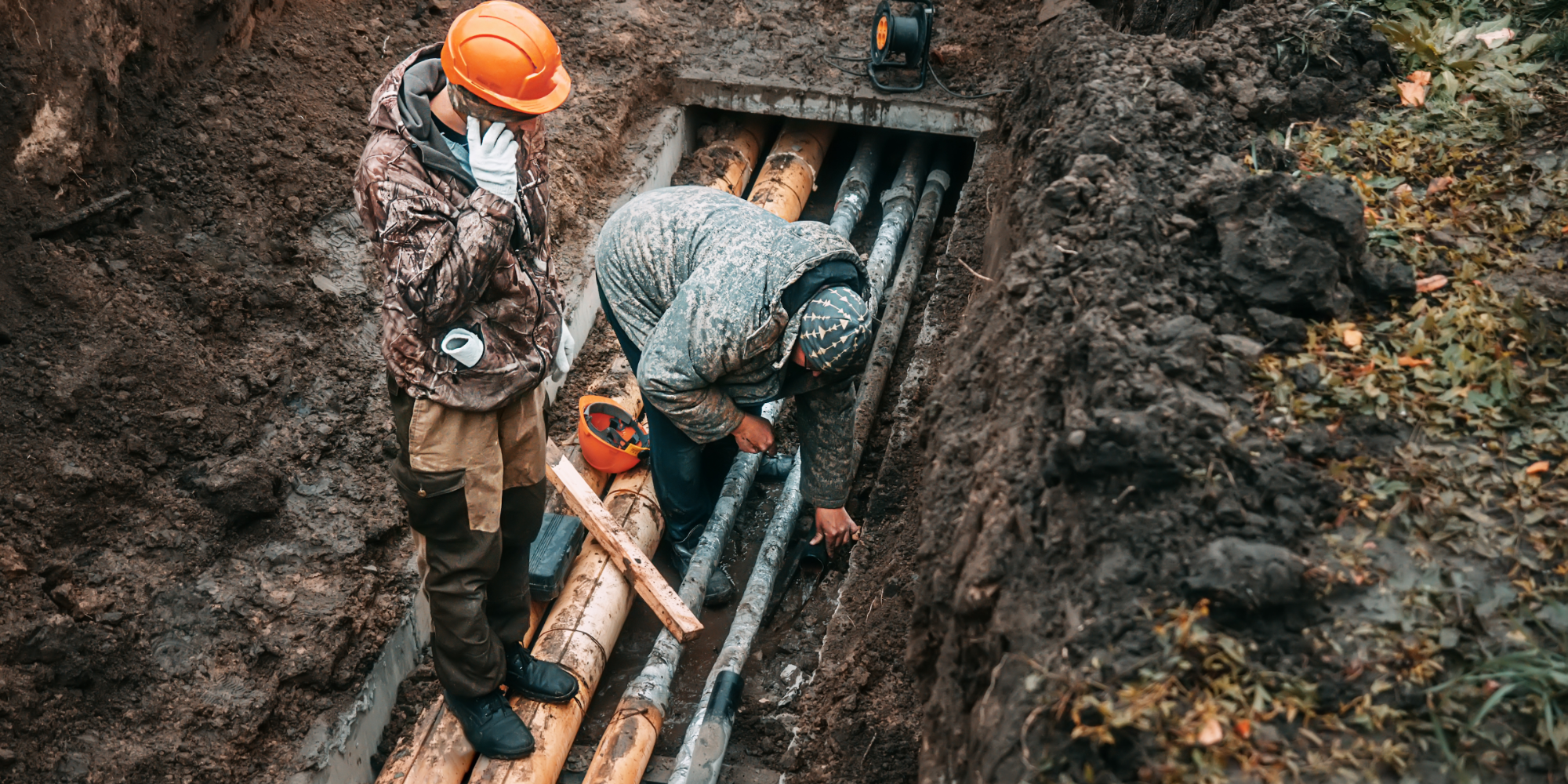To prepare for the future needs of their communities, cities, towns and villages can adopt a Dig Once policy to align major construction projects between departments, across agencies and across jurisdictions. Some Dig Once policies focus on the installation of new broadband and telecommunications infrastructure during the excavation phase of major infrastructure projects. Other Dig Once policies focus less on telecommunications and more on aligning departments and agencies so multiple investments can be made simultaneously, such as upgrading water and sewer lines while rehabilitating a roadway. Dig Once policies minimize disruptions due to excavation and construction of existing critical infrastructure like roadways or sewer systems by installing or laying the groundwork for new, much needed digital connectivity or other infrastructure at the same time. Dig Once policies can be applied to capital improvement coordination within a municipality and across jurisdictions. According to the U.S. Federal Highway Administration’s Office of Transportation Policy Studies, “Implementing Dig Once policies at the local rather than at the statewide or national level would be more effective, given the complexities of implementing a policy that spans jurisdictions.” By aligning design, permitting and construction schedules for major new construction and rehabilitation, municipal governments can reduce costs, improve efficient use of financial and staff resources, and work more closely with other departments and agencies.
Nationally, losses from natural hazards cost an average of $100 billion per year. This cost is expected to increase significantly as communities experience impacts from increased flooding, fires and storms due to climate change. Municipal leaders have an opportunity to significantly reduce the costs of climate change by investing in resilient infrastructure. Climate mitigation efforts can save up to $13 for every $1 invested. While investments in adaptation are essential to financial, ecological and social sustainability, the construction of resiliency solutions can disrupt the lives of residents during construction. As the climate continues to change, municipal governments have an opportunity to bundle resilient capital improvement projects across departments and agencies to decrease costs and construction disruption. Dig Once policies offer a framework through which to coordinate increased infrastructure retrofitting and construction needed for cities, towns and villages to prepare for more severe hazards long-term.
Dig Once policies support the strategic delivery of local capital improvements. These policies have a high impact in new construction and developments, retrofitting of existing assets and delivering essential upgrades to communities. The core benefits of this policy center around its ability to reduce road, utility and workforce disruption when investing in digital connectivity and resilient infrastructure. Several communities in the U.S. have already implemented this policy approach to coordinate capital investments.
There are several core components and best practices for successful Dig Once policy development and implementation. The policy can integrate Dig Once principles into existing processes. For example, the City of Boston integrated Dig Once principles in the Smart Utilities Policy under Article 80 of the Zoning Code. An accountable entity is identified in the policy so there are clear pathways for compliance. The policy establishes coordination practices to clearly set expectations between private projects and government systems.
Case Study: Syracuse, NY
In 2021, the City of Syracuse began a major construction project deploying a Dig Once policy to simultaneously replace aboveground and aging belowground infrastructure including water and sewer lines. Because this type of alignment can be difficult given different departments’ funding streams and grant expenditure deadlines, the city is using the Dig Once policy on a subset of projects in areas that most need multiple systems replacement and/or expansion. Syracuse Chief Operating Officer Corey Driscoll Dunham explained their method for choosing areas to deploy Dig Once: “Engineering talks to sewers, talks to water,” Dunham said. “We look at the age of infrastructure underground, we look at the number of breaks over the years, look at the road condition to say, ‘You know what, this is a really good candidate for it.’”
Departments responsible for different systems in the city are using a project on Butternut Street to align their work across departments to avoid duplicating efforts and to reduce costs. This state grant-funded project includes roadway reconstruction, replacement of approximately 100 lead water service lines and sewer line replacement. Given the successful implementation of the Dig Once policy at this location, another federally funded project on West Genesee Street is using the same principles to complete similar multisystem replacements and upgrades through cross-departmental coordination.
Case Study: Gonzales, CA
In 2016, the City of Gonzales adopted a municipality-wide Dig Once policy focused on expanding broadband infrastructure and connectivity. The policy assumes that any public works project that meets a certain set of criteria, including new road and sidewalk construction, maintenance and repair of major infrastructure and selected types of excavations, will include installation of a conduit for future broadband connectivity. The city established common standards for the conduits and associated infrastructure to maintain a consistent approach.
Case Study: South Florida
In 2019, the City of Miami, the Village of El Portal and Miami-Dade County began the process of establishing a cross-jurisdictional Adaptation Action Area (AAA), a planning framework that allows for multiple agencies across jurisdictions to focus a vulnerability-focused planning effort in one area using state funding. This project happened in coordination with state agencies, including the South Florida Water Management District and the Florida Department of Transportation, with partial funding from the Florida Department of Environmental Protection. Recognizing the acute and long-term flooding and heat challenges in the area, this intergovernmental group focused its planning effort on the Little River Basin, which contains a channelized river that runs through three densely populated jurisdictions and flows directly into Biscayne Bay.
The Little River AAA experiences rainfall-induced and coastal flooding, compounded by stormwater drainage systems that are not working as effectively in areas with a high groundwater table and that are tidally influenced. In addition, many residents are on septic systems, adding problems such as loss of system efficacy, septic back-ups and water pollution into the Little River itself. On a regional scale, water quality samples taken from the Little River outflows into Biscayne Bay consistently failed state standards. The partnership between state agencies and local governments using the AAA framework led to an interdepartmental, cross-jurisdictional working group that aligned priority projects, such as water and sewer connections and removal of septic systems, with roadway and stormwater project improvements in this area. Other municipalities can explore AAAs to enhance partnerships across boundaries and prioritize coordinated capital improvement projects, and as a lens for Dig Once policies to expand broadband and telecommunications in their cities, towns and villages.
Now is the time for municipal governments to advance Dig Once policies, considering the unprecedented federal funding for infrastructure through the American Rescue Plan Act (ARPA), the Bipartisan Infrastructure Law (BIL) and the Inflation Reduction Act (IRA). Increasingly frequent and severe climate impacts, from hurricane damage to wildfire destruction, are causing more communities to focus on resiliency and make smart choices for the future. By creating policy to align major capital improvement projects, including transportation infrastructure, water and sewer repair and expansion, and broadband extension, Dig Once policies are one avenue to help municipal governments make smart land use decisions today to reduce costs tomorrow. They can also help underserved community members by reducing the impact of climate change and increasing access to broadband.
Learn More
From digital connectivity to innovative, resilient infrastructure to everyday capital improvements, a Dig Once policy can facilitate strategic delivery of essential municipal services. Explore NLC’s brief, “Municipal Dig Once Policies for Resilient Communities” to learn more.











